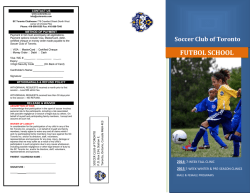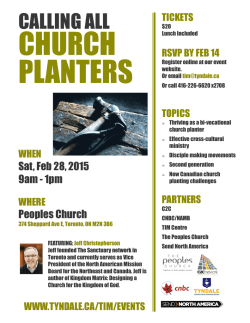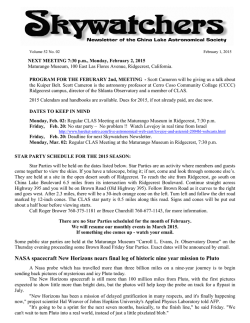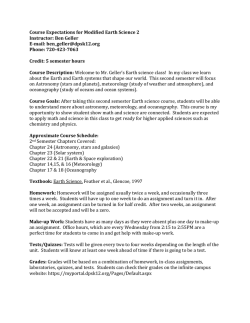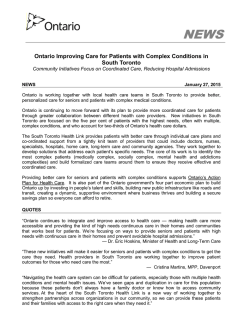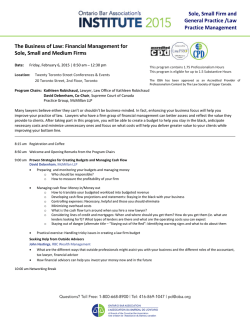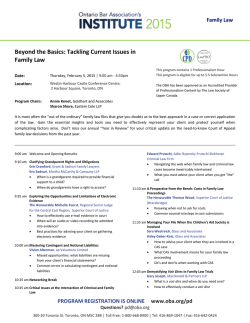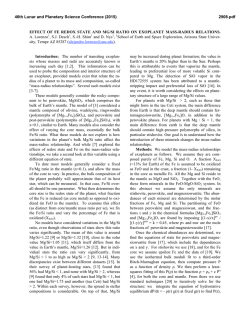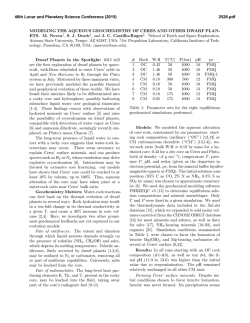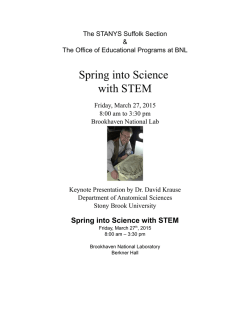
FUN HANDS-ON CLASSROOM ASTRONOMY ACTIVITIES
46th Lunar and Planetary Science Conference (2015) 1576.pdf FUN HANDS-ON CLASSROOM ASTRONOMY ACTIVITIES INSPIRED BY THE LATEST DISCOVERIES. P. Rodriguez Hidalgo1, S. Mazrouei2, 3, L. Strubbe4, L. Esteves5, M. Williams5, B. Cerinka5, T. Do5. 1Department of Astronomy and Physics, York University, Toronto, ON, Canada, 2Centre for Planetary Sciences, University of Toronto, Toronto, ON, Canada, 3Department of Earth Sciences, University of Toronto, Toronto, ON, Canada, 4Canadian Institute for Theoretical Astrophysics, Toronto, ON, Canada, 5Dunlap Institute for Astronomy and Astrophysics, Toronto, ON, Canada. Introduction: As a group of professional astronomers and planetary scientists, our goal is to help educators teach astronomy and use astronomy to help students develop scientific thinking in grades 9-12. We have designed new inquiry-based activities that promote critical thinking and teach astronomy as professional scientists practice it. We hope this program will help educators inspire new generations of students to study science, by introducing them to the latest and most exciting discoveries in Astronomy enabled by innovative technologies. Here we focus on one activity: “How do we detect extra solar planets?” Background about the Activity: The detection of extra solar planets is one of the hottest topics in astronomy right now. Thanks to the Kepler satellite, in 2014, we have discovered more than 700 new planets orbiting other stars, which amounts to a total of more than 1500. This activity is modeled on a published inquiry-based activity: “A College-Level InquiryBased Laboratory Activity on Transiting Planets” [1]. Materials. This activity is designed to work with affordable materials. 1) The star: light bulb, G25 medium white bulb (frosted vanity light); Lamp: any lamp without a shade. 2) The planets: styrofoam balls of different sizes: set of 1”, 1.5” and 2” Dowel 1/4”; Sticks: anything that you can stick into styrofoam. 3) The 1-pixel detector: cardboard with a big hole, thin wax paper to diffuse light. Goals: Content Goals: This activity helps students learn: (1) where we are in the Universe, (2) what extra solar planets are, how we discover them, and how many we have discovered so far, (3) how different solar systems have different planets than our own: what are hot Jupiters, and super Earths? (4) specifically about the transit method and its limitations: how the radius, distance to the star, and orbital inclination affects the discovery of planets. Practice Goals: Learners will practice using the scientific method: students will connect asking questions to practice, and argue from evidence how the model and the physical world are similar/different. This activity also helps develop 3D space visualization and graphic skills. The activity is adaptable to different levels and class times. Activity Steps: This activity starts with a ten minutes introductory presentation, which includes images and explanations about what extra solar planets are, one of the satellites used to detect them (the Kepler satellite), and the method it uses. This introduction also includes some context for the activity explaining what the students will be doing and why. To start the activity we tell the students that they are a Kepler Scientist now and they are giving you a solar system simulator to answer the following questions: Did Kepler find all the planets? Which properties of the planets can be found from the transit method? In the next part of the activity, which takes about 40 minutes, students are divided into groups of 3-4. They will take turns as the roles of observer, planet mover, and recorder per styrofoam ball used. Facilitation: During the activity, the teacher goes to the different groups to encourage them to investigate how planets are detected. The teacher checks whether the students are carrying out the investigation in the right direction, without answering questions or giving information, but rather by guiding the learners towards the right direction of investigation. We also provide a list of facilitation questions to be used by the teachers at the beginning, during, and after the activity. Post-Activity: We suggest a synthesis at the end of the activity so students have another opportunity to check their understanding on the proposed questions. We have also created a worksheet that students can work on at the end of the activity or as homework. In addition to the activity handout, we have created a shared Google drive, which allows access to a list of useful astronomy resources, as well as all the documents required for this activity. References: [1] McConnell N. J. et al. (2010) ASP Conference Series, 436, 97-107.
© Copyright 2025
